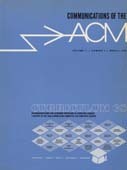In this letter, Dijkstra talks about readability and maintainability in a time where those topics were rarely talked about (1968). This letter was one of the main causes why modern programmers don’t have to trouble themselves with goto statements. Older languages like Java and C# still have a (discouraged) goto statement, because they (mindlessly) copied it from C, which (mindlessly) copied it from Assembly, but more modern languages like Swift and Kotlin don’t even have a goto statement anymore.



Languages don’t have goto because they mindlessly copied it.
True it wasn’t mindless - just idiotic
It’s not idiotic. You can do a lot of performance optimizations with GOTO so providing it as a “use it if you know what you’re doing” option is fine. And some things are easier to read with GOTO.
FWIW the Linux source code is full of GOTO statements. Nearly 200,000 of them in fact.
There’s a solid reason for goto in C.
Bringing goto into Java was (and is) idiotic.
If you’re trying to squeeze every ounce of performance out of your code then you’ll need those optimizations.
But any higher level language than C the entire point is to write easily maintainable and useful code that any idiot can go, read and update. A goto is antithetical to readability.
It can be, sure. But when used in a limited manner where it makes sense it can be the more readable option. I’ve used it in a try/catch to retry the operation after changing a variable. One label (“reconnect”), one goto, totally easy to understand on a surface level.